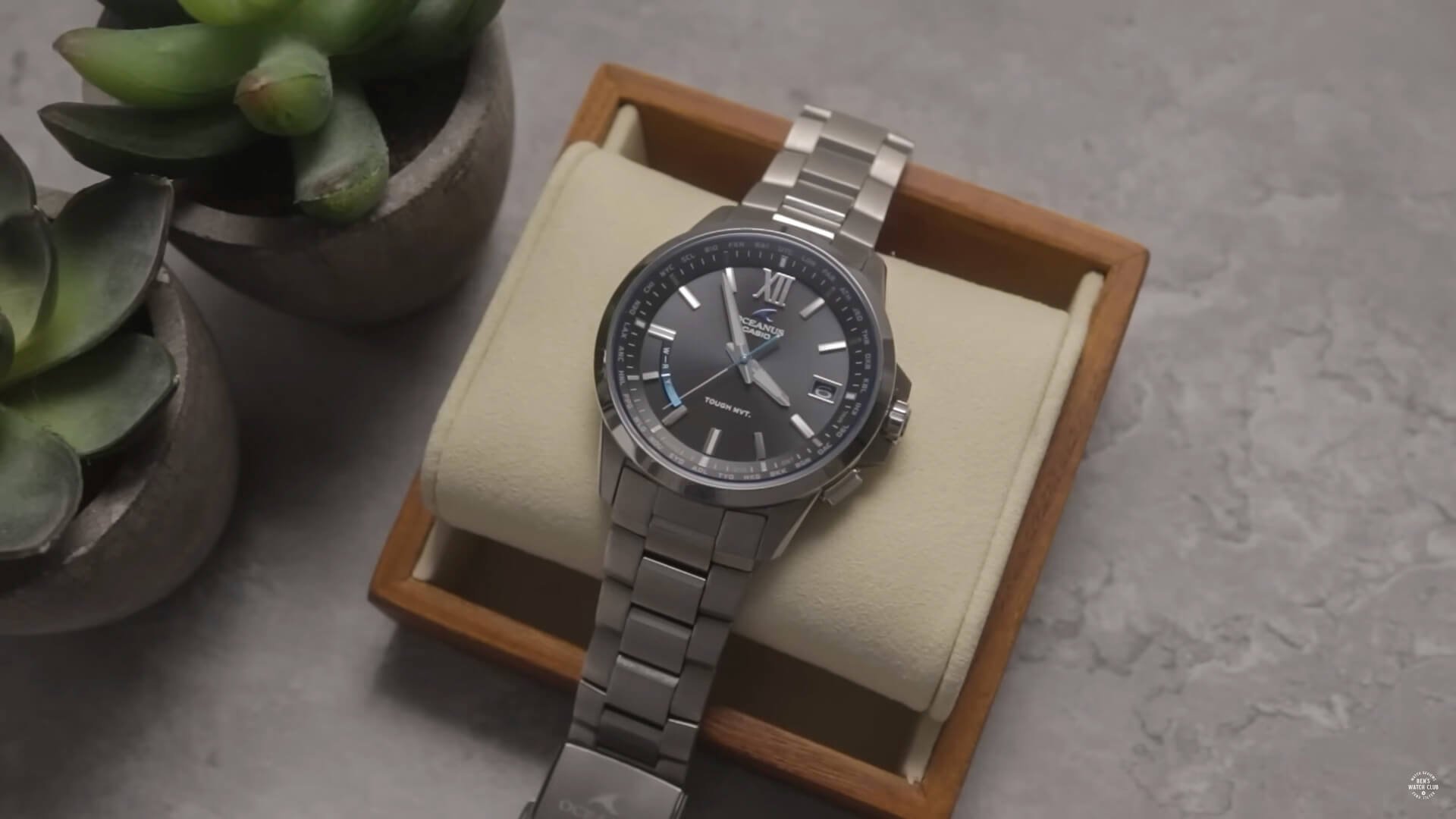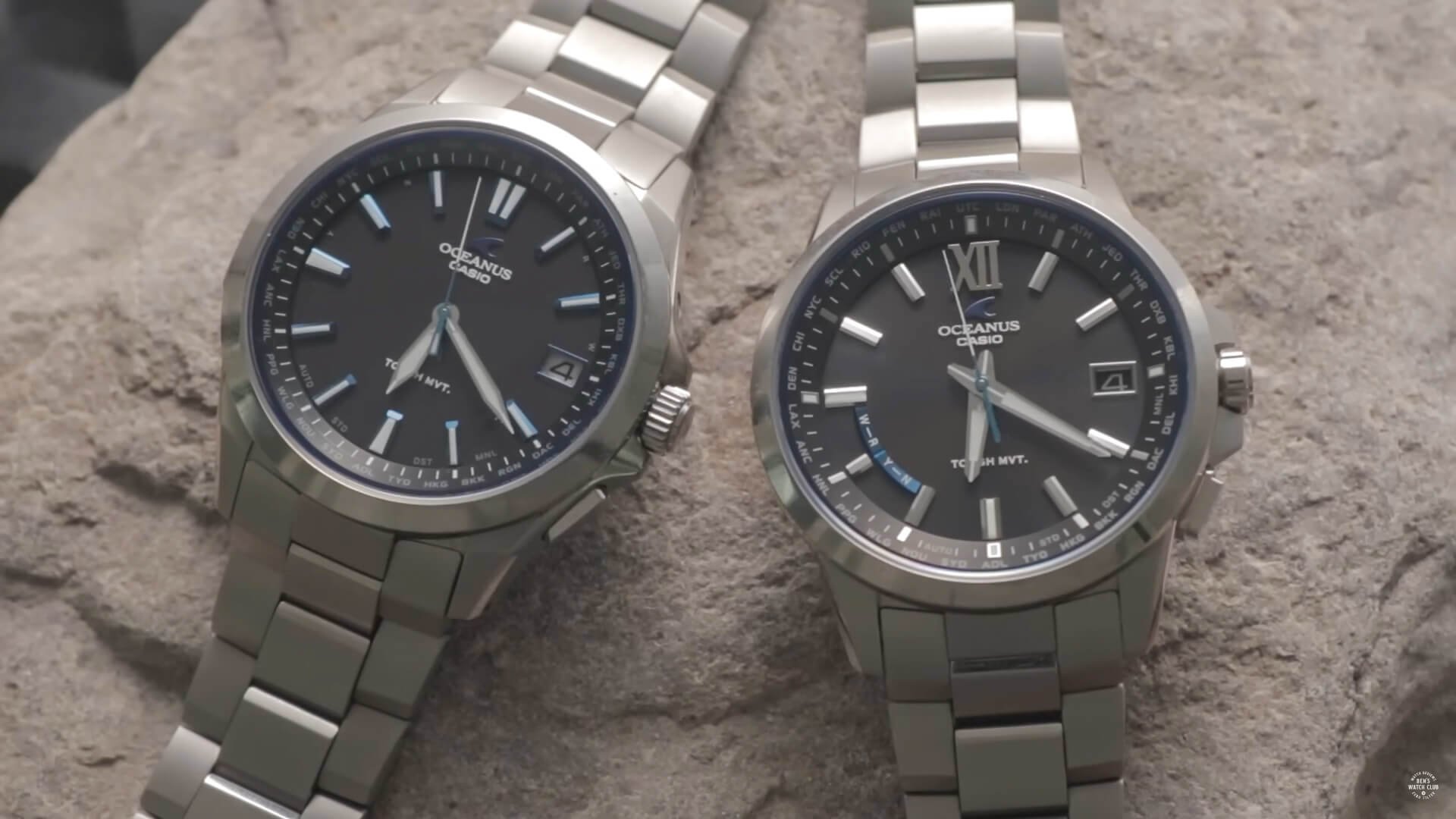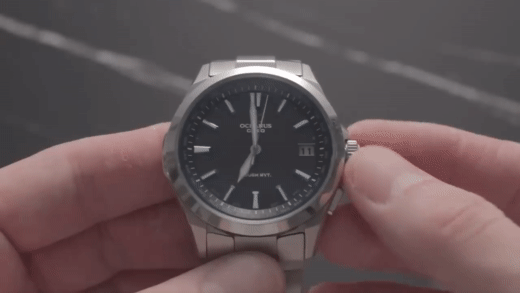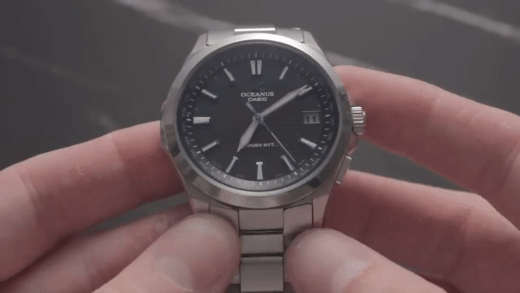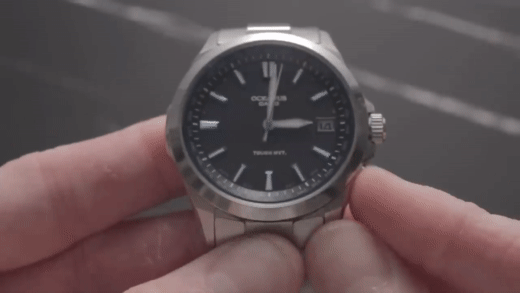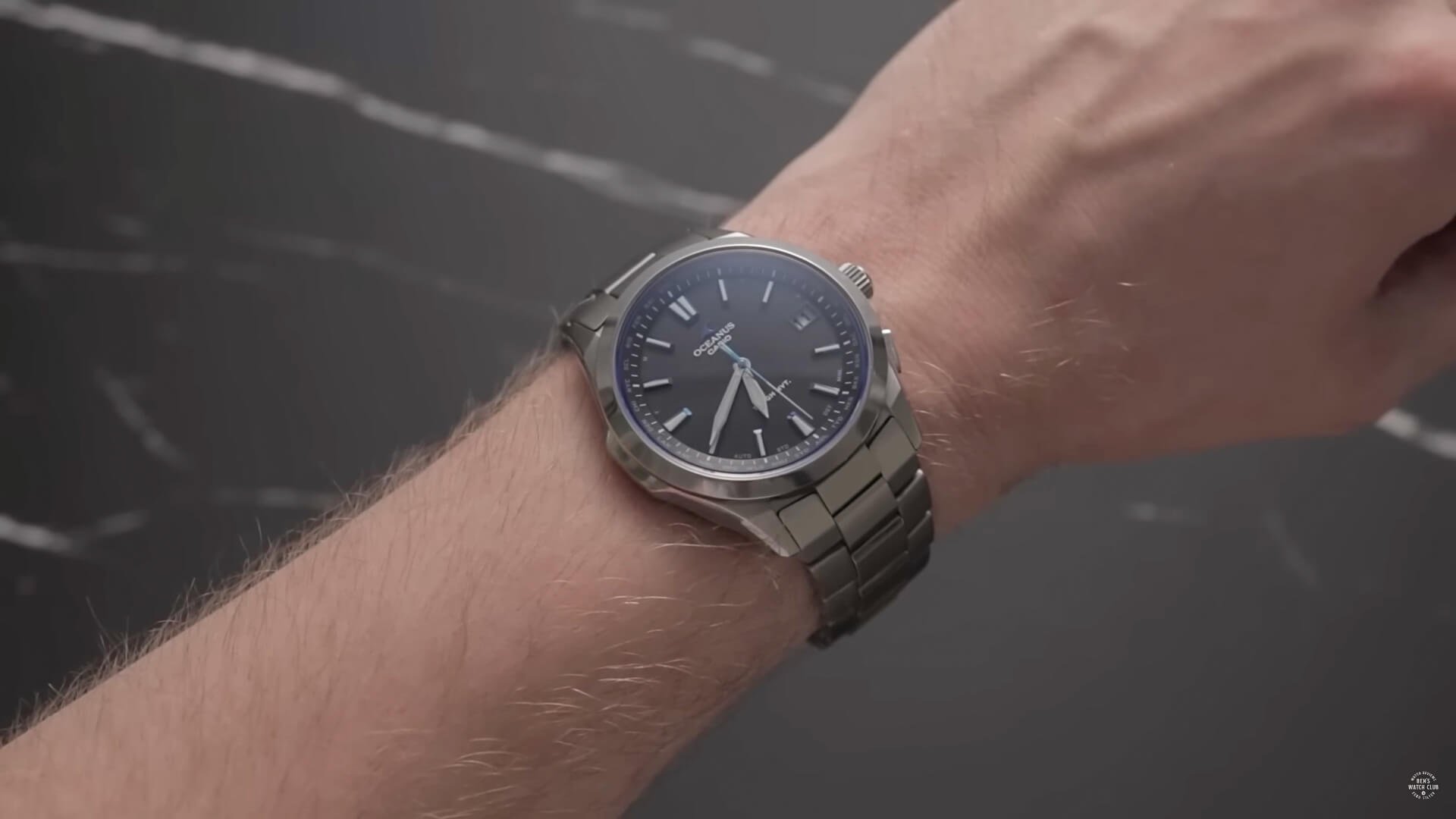Casio Oceanus OCW-S100 Review | This Casio Is Beautiful, But…
(This page features affiliate links, for more information, click here.)
You've probably never heard of it, but 'Oceanus' is the obscure premium watch range offered by industry giants Casio. Yes, that's the same brand behind those plastic calculator watches which help you cheat in maths class.
While usually exclusive to Japan, I managed to get hold of one of these mythical pieces a few months ago to see if they justified the high retail price and import fees.
Casio Oceanus T150
Undoubtedly, it was a world away from their cheap digitals and was very well constructed. In hindsight though, maybe I made a mistake?
You see, it came with some shortcomings that made me ultimately prefer the far less expensive Casio Lineage watch, made out of the same material. Many viewers said I'd chosen the wrong model; apparently, there were much better options out there that I'd overlooked.
Selfishly, I originally chose the OCW-T150 because it had the smallest diameter of any Oceanus, at least on most listings, giving it an optimal chance of fitting my tiny wrist. But, I later discovered that many Japanese retailers include the crown or its guards within that width measurement, which threw a spanner in the works. While the T150 was smaller than anticipated and almost fit me, perhaps other suggested models were actually closer to what I was looking for?
Casio Oceanus S100 Review
That's how I landed on this, the OCW-S100. It's probably the most recommended by you guys, and I'd previously seen it on the Discovery Japan website; the same dealer who sent me the T150.
Online, it's got a bigger diameter measurement than the previous Oceanus, but I suspected there was more to it. For example, in the stock images, the identical-looking bracelet seemed to take up a more significant percentage of the dial width, suggesting the watch could wear more compactly.
Well, we need to speculate no longer. Thanks to Discovery Japan for once again providing this watch, so we can see what's what. It's one of the only places you can get hold of these, and they've got a multitude of other JDM models worth exploring too.
I've been wearing this OCW-S100 for the past few weeks, and in short, it's similar to the T150, but has some unforeseen differences.
design & finish
At a glance, aesthetics are also comparable. The color scheme is once more a highly versatile blue-black, only with a little more navy. The titanium case and bracelet also exhibit the same near-gunmetal outer as last time.
Left: Oceanus S100 Right: Oceanus T150
Nevertheless, both of these are slightly different shapes. The T150 has narrower lugs, giving it a bulbous, circular shape, while the S100 has a more standardized silhouette with a smoother transition. It's also got a projection on the left side, mirroring the crown guards, to provide a more symmetrical appearance, not too dissimilar from that on the well-loved Lineage watch. Both have an equal level of case finishing and have awesome Zaratsu-polished bezels and chamfers, giving mirror-like results that ooze class.
WATCH MOVEMENT
Unusually, this S100 has an easily-removable 4-screw rear, which differs from the snapback on the T150. This allows for more convenient cell changes, should they ever be required. This provides a rare glimpse at the calibre 5235 'tough solar' movement. Outside of a single tiny page on the Casio website, the only information you can find about this is in the user manual, where the instructions are mentioned alongside those for the 5414 module used in the other Oceanus.
While there are minor differences in hand placement, the 5235 movement is pretty much the same, with an intuitive Home City time function and automatic atomic clock synchronization via multi-band 6; leading to incredible accuracy. Unlike some of the more elaborate and expensive Oceanus models that house multiple subdials, this watch does not have Bluetooth compatibility, as it has no means of displaying extra information.
Some of the dial text got me a little confused about the performance. You see, I noticed that these Oceanus watches were adorned with 'Tough Mvt' on their dials, as opposed to the 'Tough Solar' title commonly seen on lower-end models. So, I got a bit of that imposter syndrome, fearing I'd somehow been duped into thinking these might not be solar.
A double check online revealed they are solar, at least to some extent. Though, curiously, the 'tough movement' and 'tough solar' technologies inhabit separate pages on the Casio website. So, I figured I'd email Casio to discern the differences.
Unfortunately, their response, while quick, was also very ambiguous. When combined with the webpage information, I'm left with the impression that the 'tough movement' designation is a slightly evolved version of the 'tough solar' technology; if anyone reading has any decent information about this technology, please do drop it in the comments section below.
Features
Upon unboxing, if the Oceanus is ticking in two-second intervals, then power is low, and the watch needs to be exposed to direct outdoor sunlight for 8-15 minutes. A full charge will power the watch for approximately seven months.
When you unseat the crown, the second hand will point to the current selected Home City time zone. You can then rotate the crown to change it to your location and compress it to make a selection; the hands will automatically move to display the time in that time-zone.
As mentioned earlier, this watch has multi-band 6, meaning it can automatically sync with atomic clocks across the globe, depending on your location. It should do this straight out of the box and will receive an update once per night to ensure the time is accurate each and every day.
You can see if your watch has successfully received a signal by pressing the pusher just once. It will then move to either ‘Y’ for yes or ‘N’ for no.
These are two of the small letters positioned inside of the chapter ring.
If it gives a negative reading or at any time you want to perform a manual synchronization, you can simply hold the pusher until the second hand snaps to the ‘R’ in the top-right. This means the watch is preparing for a reception. If the watch is within range of an atomic clock and has sufficient charge, it will then automatically move the hand to ‘W’ after around 20 seconds, at which point a reception is in progress. The second hand should remain there for 2 minutes or more and will eventually shift to the correct time and date once the procedure is complete.
To check if it was successful, press the pusher once, and it will read either ‘Y’ or ‘N’. A failed test usually means the watch is low on charge or has poor reception in that area.
If, for some reason, you want to forego the multi-band technology, you can manually set the date and time by unseating the crown, then holding the lower pusher.
The second hand will then snap to either just before or after the 12 marker, indicating AM or PM, respectively. You can then rotate the crown four clicks upward to start moving the hands smoothly; when they reach their target, you can stop this motion with one downward click. Subsequent pusher presses will give you similar control of the hour hand, the date window, as well as month and year. For more information on those, please consult the manual.
You can manually switch between standard time and summer time (or DST). However, in most cases, this is also worth leaving on automatic. You can check this status by using the crown to select your home city and then using a pointed object to compress the recessed button at the top-right. The hand should move to ‘AUTO.’ If it points elsewhere, you can instead hold down the recessed button, until the hand switches across to AUTO.
Calibration
Interestingly, there’s even an obscure hand and date calibration function to achieve perfect alignment. To perform this action, unseat the crown and hold the main pusher for around 10 seconds until the second hand flies up to 12.
The other two hands will follow and line up beneath, usually with dead-center placement. I’m not sure what witchcraft this employs, but my Oceanus was originally ticking around half a millimeter to the left of each marker. Since using this trick, it’s been flawless, hitting every second. It really is a killer feature.
For the date function, keep the crown unseated and give the pusher a firm press. You can then slowly turn the crown clockwise one click at a time to microscopically shift the date wheel upward until it hits the perfect spot. If you overdo it and the date sits too high in the window, rapidly turn the crown four clicks, and it will begin cycling through the date numbers. When it’s about to return to one, rotate the crown one click anti-clockwise to stop it prematurely, and then attempt alignment again, one click at a time. If you spin too fast, it will start cycling through the dates again. Once you have the perfect fit, compress the crown to lock it in place and resume regular timekeeping.
While many of these functions are niche and tricky to remember, for the most part, it’s a set-and-forget system that works very well indeed. The last one is extremely handy, as there’s nothing worse than spending loads on a watch that arrives misaligned.
DIMENSIONS
Regardless of movement quirks, a positive side-effect of the S100 case rear is that it's less pronounced, leading to a reduced case thickness. When measuring with calipers, you'll get a larger result due to the raised crystal, though I'd say the S100 still feels slimmer on wrist, despite there not being much in it. The steeper lugs also aid in its wearability, alleviating one of this watch's main issues, which I'll get to later.
Sapphire returns here, though there is a slight dome this time, which doesn't inhibit functionality to any degree and looks a tad more premium. You wouldn't expect anything less, considering the price. Thankfully, the decent anti-reflective coating is also back, aiding visibility.
Let's run through the main draw of this watch before we shift focus to some of the weaknesses worth knowing about before you pull the trigger.
STYLING
The main improvement is the look. Like a horological Pokemon evolution chart, the S100 completes the titanium trifecta, sitting between the T150 and Lineage in terms of appearance. I think most would agree that this is better-looking, or at least has a broader appeal, than the divisive T150. Out goes the misplaced Roman numeral at 12, and in comes an array of attractive faceted markers, boasting shiny blue surrounds that spectacularly catch the light and perfectly match the Oceanus iconography.
The raised outer ring is more restrained than the T150, with subtler text and smaller indexes that help it look less cluttered, while the sheen of the enamel dial also looks much more sophisticated than the standard gray sunburst used previously. I think it's enamel anyway; it certainly looks that way, though there's no concrete information about it.
Whatever the case, I think it's a beautiful watch. It's perhaps even more versatile than the already competent Lineage, due to the absent digital portion and can easily be dressed up or down in a flash. It might lack the smooth sweep of a more advanced quartz or a mechanical watch, but it's nonetheless a great all-rounder that could stand firm as a minimalist one-watch collection – almost like Casio's answer to the Rolex Oyster Perpetual.
sIZING
Surprisingly, the S100 is roughly the same size as the T150, with an identical 39.5mm diameter (excluding the bulges) and equal 45.6mm lug to lug.
I say 'surprisingly' not only because these measurements differ significantly from the online listings, which once more include the crown, but also because the S100 feels like a smaller watch when on the wrist. This is primarily due to the bezel being flatter, making it appear wider from above, leaving the watch with a smaller dial. It's not tiny by any stretch, in fact, I think it looks more proportionate than the T150; it's just an often forgotten factor that you wouldn't expect to be of such importance.
Only when the pair are side by side will you remember that these are so closely matched.
Due to the lugs I mentioned earlier, the S100 is a tad more comfortable on my 15.5cm wrist, though I imagine either will suffice for the majority of you reading this. For a super slim wrist, or those wanting to switch the bracelet out, I'm afraid you'll have to combat the fixed links baked into the S100s housing.
Bracelet
I can only hope that all Oceanus watches shift to standard lugs in the future, unless designed explicitly with integrated links in mind. This S100 is like the T150 in that regard, meaning it imitates regular end links, so it sucks! Really…sucks.
At first, I thought the titanium bracelet was the same as before too. It has an identical link shape and style, which gave me hope that I'd see the impressive slide rail system reappear. But, when I opened up the clasp, it was nowhere to be found. Yeah, it appears they ditched it in favor of just a plain old push release alternative, with a measly two micro-adjustment holes. Their attempt at rectifying this comes in the form of a half-link that can be removed for finer alterations. While somewhat functional, this inferior method means you can't adjust the size on the fly, a boon that comes in handy during changeable conditions when your wrist size marginally changes.
Only a couple of weeks ago, I wore this watch during some quick walks on the hottest day of the year, and while the titanium case helped prevent sweat buildup and irritation, I did miss the slide rail system, as the watch became a little tight after only a few minutes. Given that these two watches retail for similar prices, I fail to understand why the S100 drops such a great feature, especially when the bracelet is unchangeable!
So some of the frustrating flaws remain well and truly in play. Including the lume, which is again sub-par.
FINAL THOUGHTS
Nevertheless, I think I'd still give this model more of a green light than the other Oceanus, which didn't have the awesome visuals to fall back on. This one looks much more like it deserves the 'luxury' title often tied to it, despite the mid-tier price tag.


